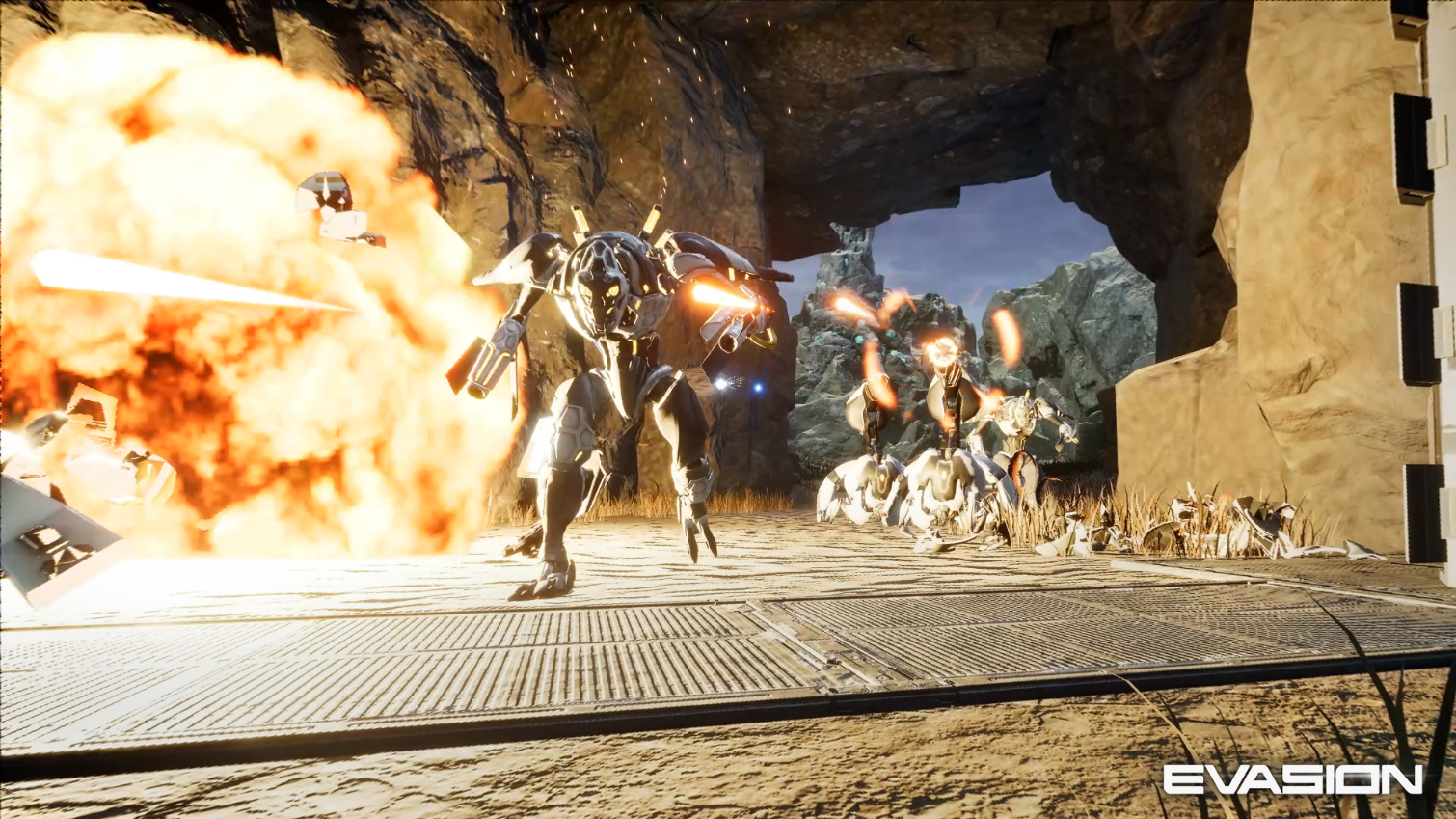Archiact’s ‘Evasion’ Brings High-Intensity Co-Op FPS Battles To Vive, Rift
Update: 10/24/2017, 4:00pm PT: Added gameplay trailer
Archiact, a VR-only developer based in Vancouver, BC, revealed Evasion, a first-person, co-op multiplayer sci-fi adventure (say that five times fast) for the Oculus Rift and the HTC Vive platforms. The title is set to launch in early 2018, and we got an early preview ahead of its reveal.
In Evasion, the world is under attack from a powerful alien race, and it’s up to you and your buddies to save it. You can play Evasion solo if you want, but Archiact is developing the game to be a co-operative experience, with up to four players working together to ward off the invading alien threat. You can choose from four classes of character, including the Striker, the Surgeon, the Engineer, and the Warden. Each character class has unique strengths, weaknesses, weapons, and abilities. It’s up to you and your teammates to pick classes that complement each other and your play style. For example, you could go out without a surgeon at your side, but you better not get hurt if you do.
Evasion also features a character development system that lets you customize your character to become a more effective fighter as you progress through the story. You’ll unlock better weapons and new abilities as you move deeper through the game.
Locomotion Options
Archiact said that it is building a game for “devoted fans of the VR FPS genre” who aren’t interested in teleportation locomotion methods. There’s hunger in the community for more games with smooth locomotion options, and Archiact is trying to fill that void.
“Archiact has been crafting immersive VR entertainment since 2013,” said Kurt Busch, Studio Head at Archiact. “With Evasion, the team is using everything we’ve learned and weaving our experience into a truly genre-defining AAA title. With innovative locomotive movement and intense FPS gameplay, we’re convinced Evasion will prove a stand-out VR experience and we can’t wait for gamers to play it themselves.”
Archiact hasn’t revealed the full list of locomotion options that the game offers, but the developer said that players would have several methods to choose from, including a new method that we had never encountered: Head-Bobbing.
Get Tom's Hardware's best news and in-depth reviews, straight to your inbox.
Head-Bobbing locomotion is like Arm Swinger locomotion, but we think head-bobbing could be somewhat more effective than the latter. With Arm Swinger locomotion, you must swing your arms back and forth at your sides like most people do as they walk or jog. The swinging motion of the controllers gets translated to directional movement of your avatar. Arm Swinger works well for slow paced games or games that don’t require you to hold things like weapons, but it’s not the best options for first-person shooters (though, we’ve seen it work in Vindicta).
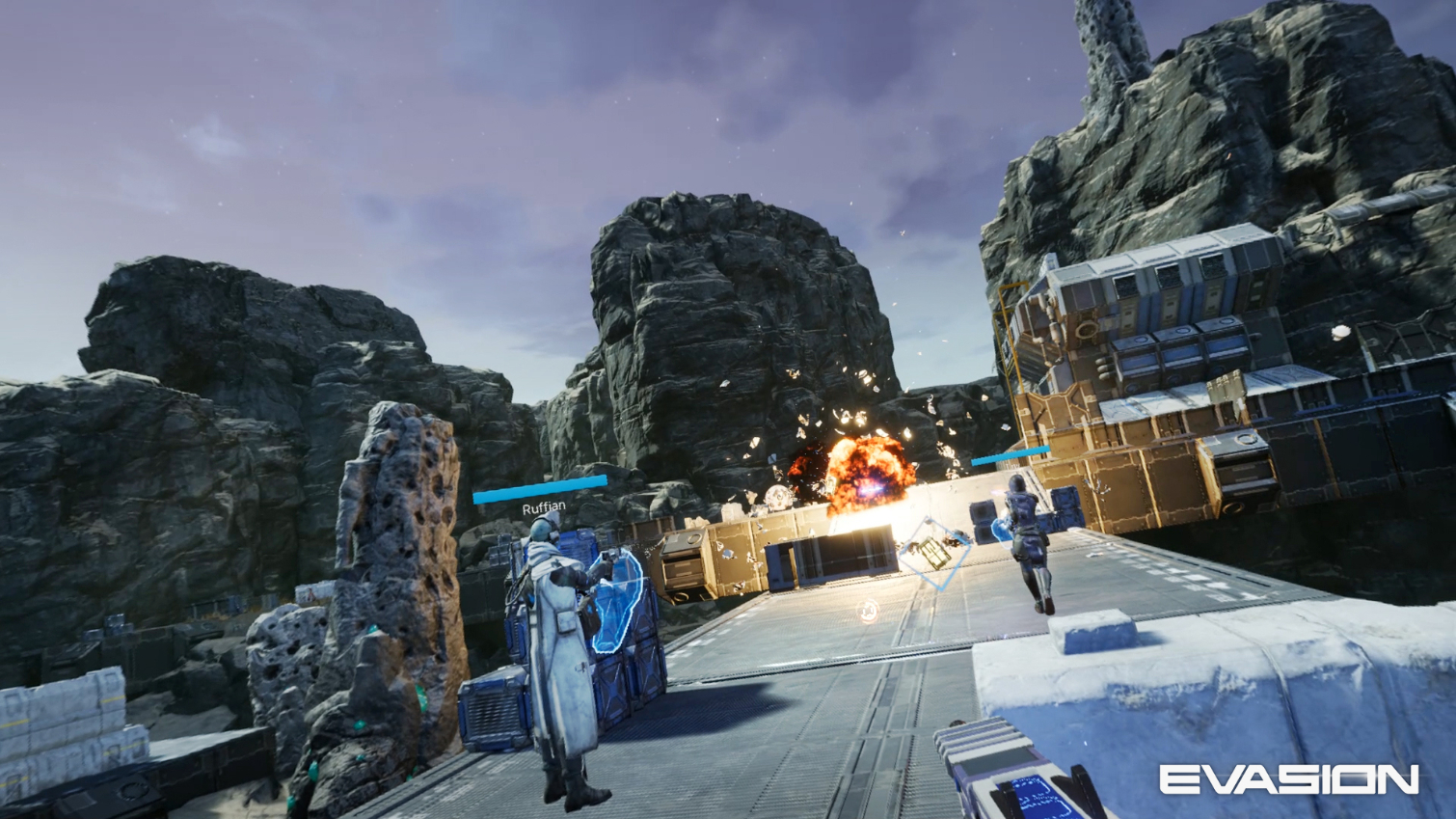
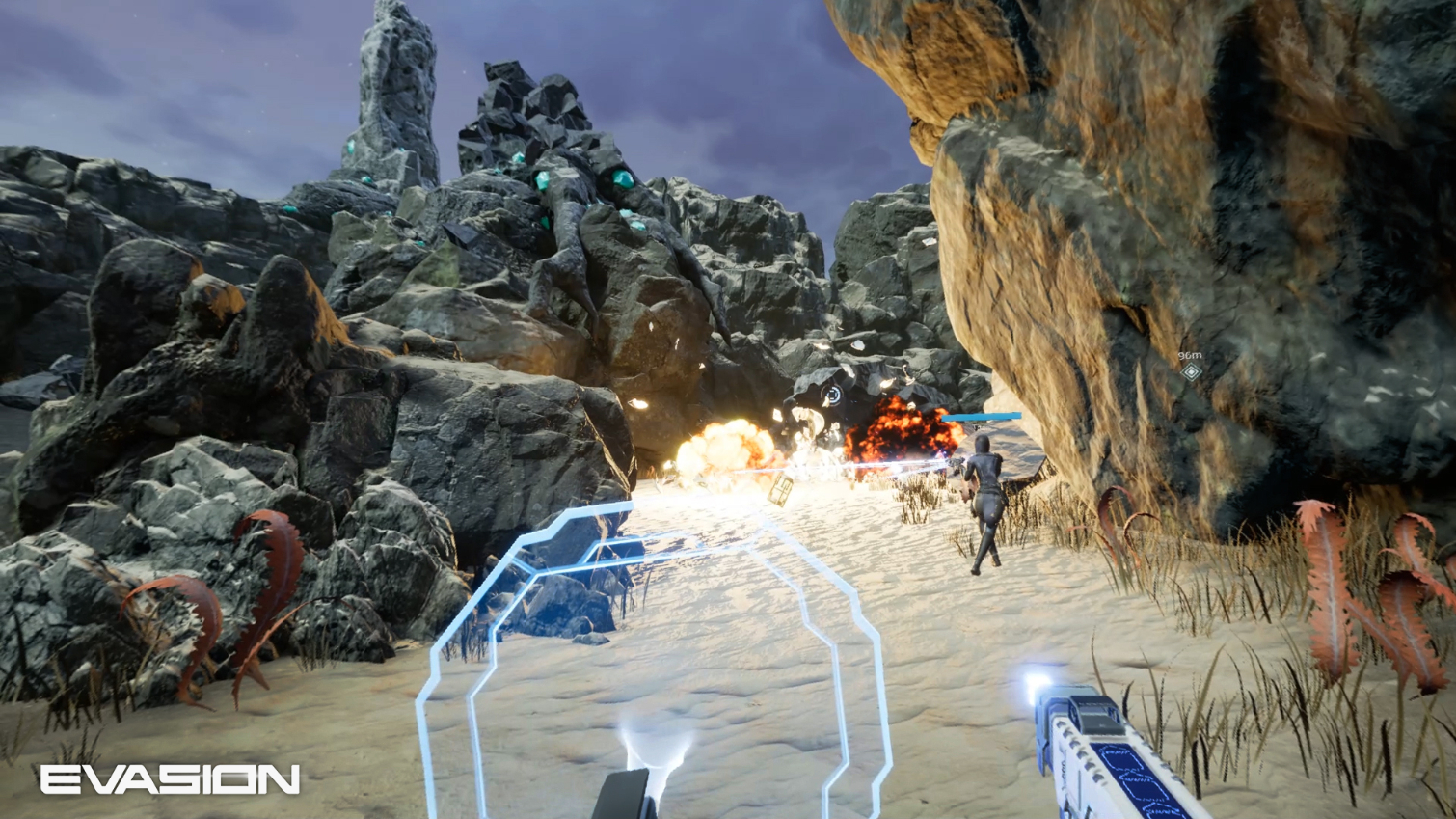
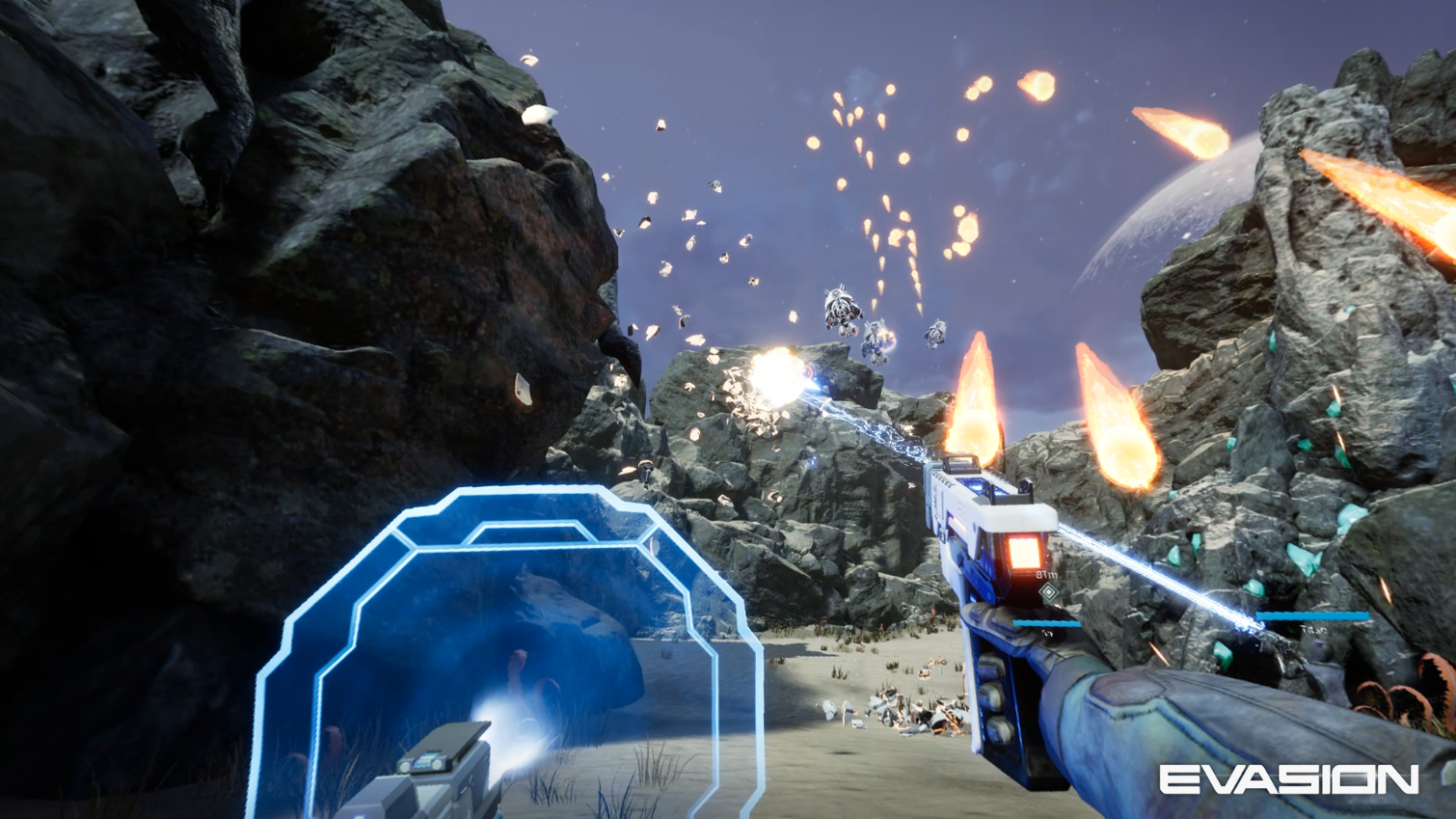
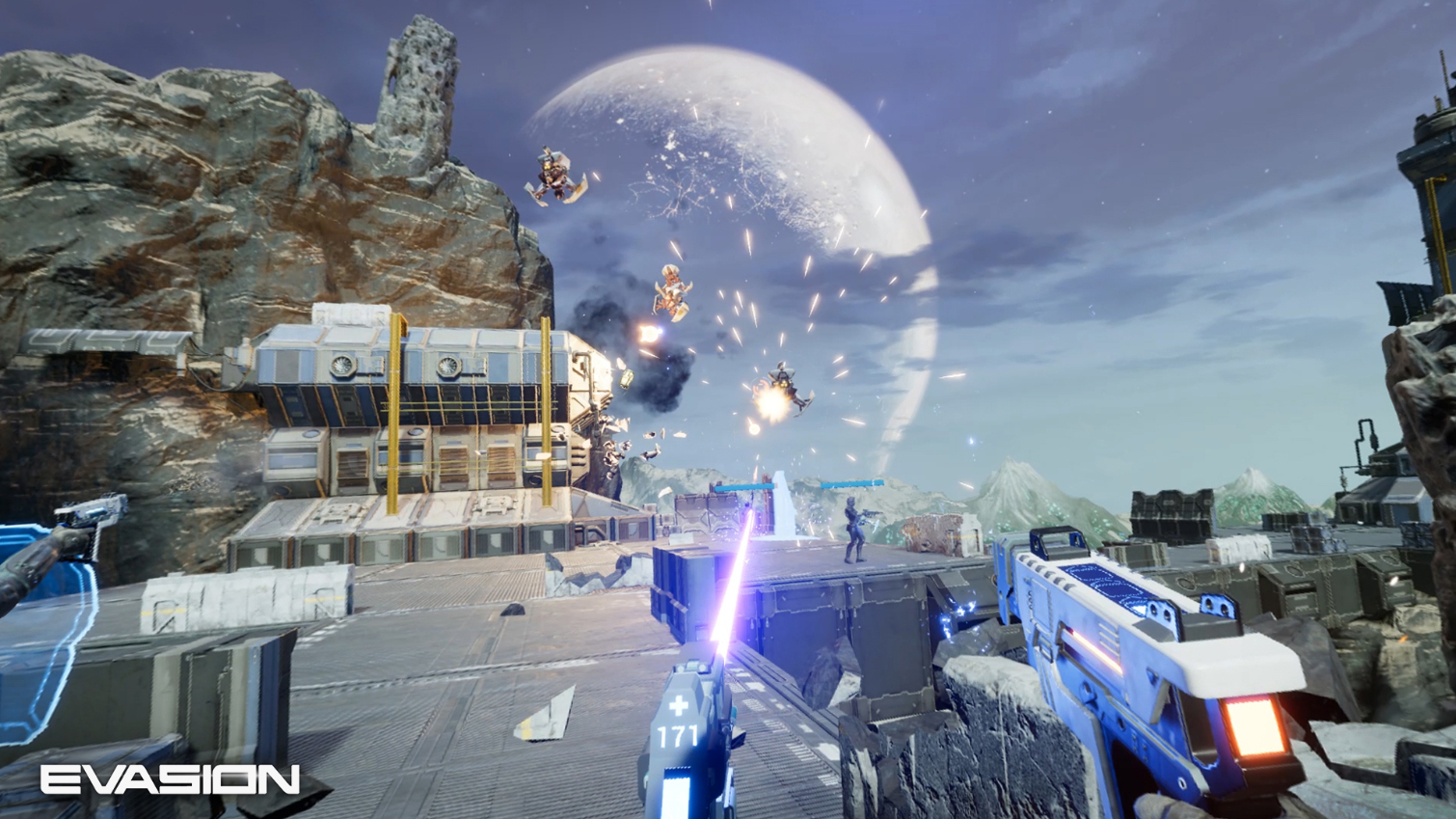
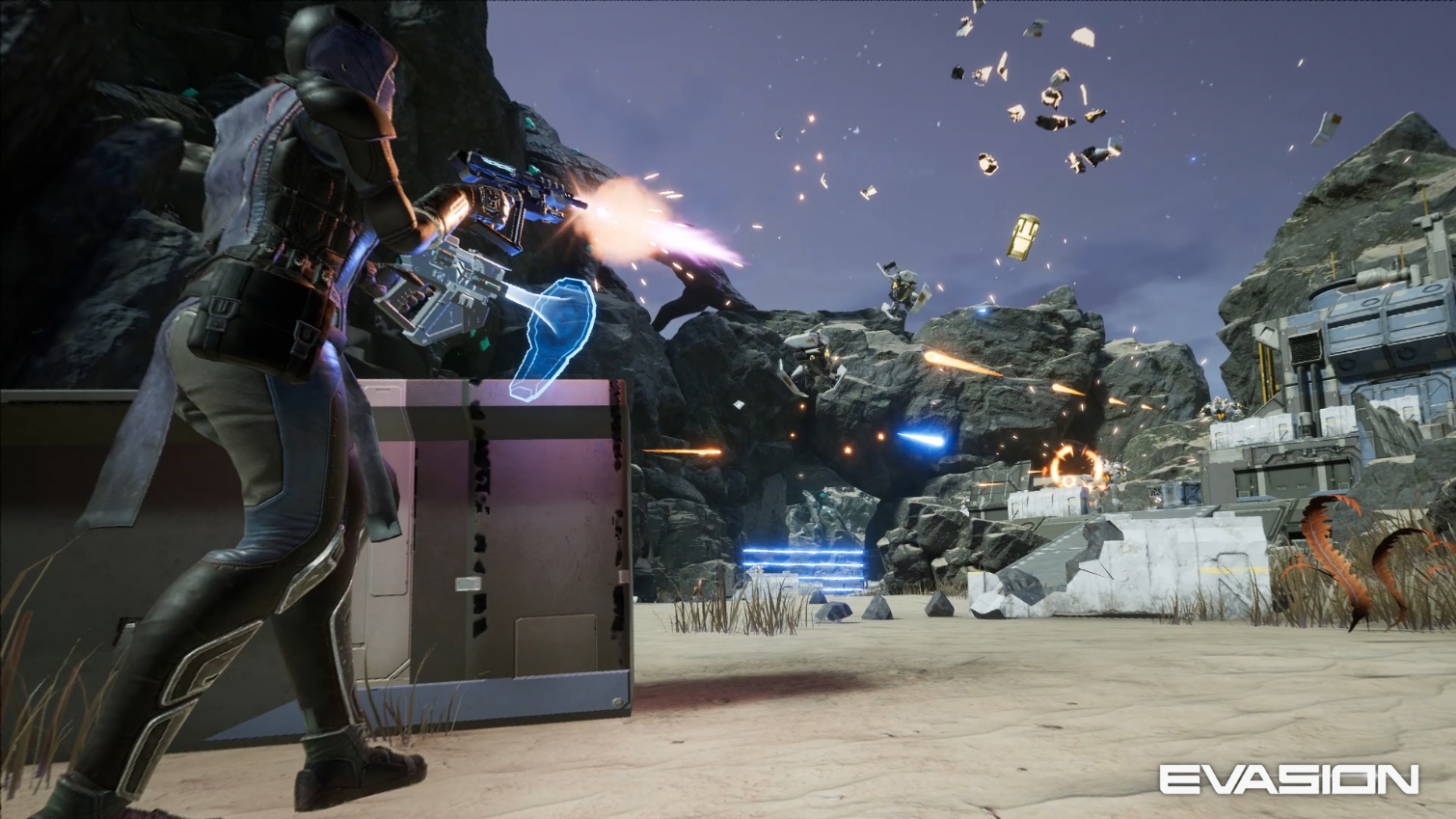
Head-Bobbing locomotion works in much the same way as Arm Swinger, except instead of capturing the swinging motion of the controllers, the system calculates the rate at which your head bobs up and down, which again borrows from a real by-product of natural running and walking motion. When you're running, your head would bob up and down at a faster rate than when you walk. Archiact figured out how to translate the bobbing head motion to a comfortable locomotion system that leaves your hands free to wield your shield and weapons. Head-Bobbing locomotion works so well that we’re surprised we’ve never encountered it before.
Full Body Avatars
There are many multiplayer VR games available, but many of them don’t offer full body avatars. There’s good reason for not bringing full avatars into virtual environments: they don’t look right. It’s really hard to solve body tracking problems when you only have a handful of tracked points. With just two hands and a head, its difficult to translate your elbows, hips, knees, and feet into a game.
Most VR developers go the easy route and build rudimentary avatars around the three tracking points. Archiact wasn’t willing to settle for half-avatars with floating hands, heads, and torsos, so it adopted the IKinema inverse kinematics system to mimic full body motion. Of course, without tracking your feet and hips (Vive Trackers can’t come soon enough!), the animation isn’t perfect. But IKinema’s system is as good as any we’ve seen before.
Intel Partnership
You may recall that last year, Vertigo Games caught some flak from the community when it revealed that you would get the best experience out of Arizona Sunshine if you have an Intel Core i7 processor in your computer. The idea of favoring specific hardware to unlock certain features of a game didn’t sit well with many gamers. However, upon further testing, we discovered that Vertigo Games wasn’t totally off base with its assertions that an i7 offers a better experience. Still, we found no reason that you couldn’t enable the advanced features on less powerful CPUs.
Archiact is the latest developer to cut a deal with Intel to promote the CPU maker’s chips as the superior gaming platform. Archiact said that if you play Evasion on a computer equipped with an Intel Core i7 or Core i9 processor, you’ll have access to “best in class physics and destruction” animation. Archiact did not say whether the advanced physics and environment destruction options would be available if you don’t have a high-end Intel processor.
Coming Next Year
Archiact has not yet revealed the release date for Evasion, though, we expect the developer to release the game in the spring of 2018. You can’t pre-order Evasion yet, but you can add the game to your Steam wishlist today.
Kevin Carbotte is a contributing writer for Tom's Hardware who primarily covers VR and AR hardware. He has been writing for us for more than four years.
